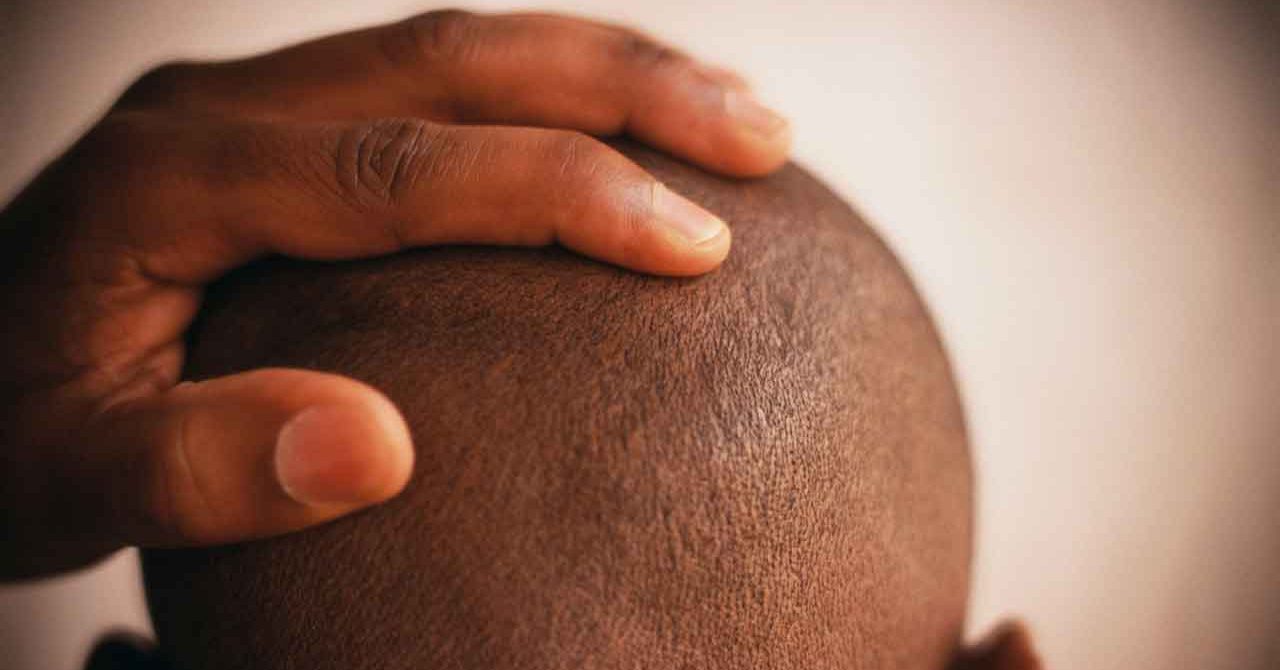What Is the Best Treatment for Thinning Hair?

Thinning hair or a bald spot doesn’t mean you’re not a great-looking guy. There are many options for treating thinning hair. Here's what you should know.
Thinning hair or a bald spot doesn’t mean you’re not a great-looking guy. You’re probably noticing pink skin more than anyone else does. But if you’d like to fill in the pink, you have options.
YOU MIGHT ALSO LIKE: What You Need to Know about Hair Loss
Minoxidil for hair growth
You can find minoxidil (Rogaine) right in the drugstore or online as a liquid or foam. It won’t work on bald areas but is about 60 percent effective at reinvigorating patches where your hair is thinning. The foam version may work best. Apply it twice a day to a dry head.
You’re likely to see good signs after two months and notice more improvement after six. Consider using minoxidil part of your routine, since you’ll be losing hair again if you stop taking the medication.
Finasteride for hair loss
If minoxidil doesn’t work, there’s a prescription that might. In clinical trials of finasteride (Propecia, Proscar), a drug developed to treat an enlarged prostate, researchers noticed that it boosted hair growth.
This oral drug blocks an androgen hormone that causes hair loss. Talk to your doctor about the possible effects for you. Some men experience a loss of sex drive and other sexual issues.
Like minoxidil, finasteride doesn’t work on a bald scalp, and the effects continue only as long as you take the drug. Finasteride may take longer to work — up to a year to show the full impact. You may get the best results applying minoxidil while also taking finasteride, some research suggests.
Platelets hair treatment
Another option is to get your scalp injected with platelets that contain growth factors to stimulate your follicles. You’ll need four treatments the first year — every three months you’ll give a tube of blood and receive an injection — and then once a year to maintain the new look.
Each treatment might cost from $1,5000 to $3,000.
You might have a mild swelling on your head for a day or two. Although the Food and Drug Administration (FDA) hasn’t approved the treatment for hair loss, it is effective for more than half of all patients, reports Ivan Cohen, MD, a dermatologist who teaches at the Yale University School of Medicine.
Laser therapy
Laser therapy is less effective than other treatments, but it is FDA-approved and helps some men. After four months you might see a 35 percent increase in your hair count.
You’ll wear a cap or use a comb, both emitting laser light that increases blood flow to stimulate your scalp. You can have the treatment in a doctor’s office or do it at home, typically for up to 15 minutes three times a week.
Clinical laser treatments can cost thousands of dollars a year, but the devices you use at home may be less expensive.
Hair Transplants, information, and cost
Hair transplants look more natural than they once did. You can reclaim a full head of hair and return to work after a few days. But you won’t see your new head of hair for six to nine months, and some men need a second round.
The oldest procedure is follicular unit transplantation. Your doctor removes a strip of hair by hand from the back of your scalp, separates it into units of one to four hairs, and then implants them in tiny slits.
Follicular unit extraction (FUE) may have less predictable results, but you run less risk of scarring and may feel less pain afterwards. In this procedure, the surgeon removes individual hair units rather than a strip, with a device using cameras and software, rather than by hand. The operating time is shorter.
Both procedures costs between $5,000 and $15,000 for one treatment.
Shaving your head
If these treatments sound unappetizing, or too expensive and time-consuming, you might just shave your head. Experiment after talking to a barber. Do you have unusual ears or an especially long or short neck? Is your skull bumpy? You may not be a good candidate. A good barber will tell you the truth and give you an expert shave if you decide on shaving.
Like the look? Here’s how to do your own shave, using whatever razor to which you’re accustomed.
- First trim any regrowth down to a stubble.
- Get your head as wet as possible, to prevent razor bumps or ingrown hairs. The simplest way is to shower first. You can also splash your head with hot water for at least half a minute, or you can wrap your head in a towel you soak with hot water and wring out.
- Next, apply a shaving lubricant, an oil, cream, or gel, and work it in thoroughly.
- To shave, start at the highest point of your head and shave towards your forehead. Return to the crown and shave another path that slightly overlaps. Repeat on the other side. Take it slow and steady. For the first few months you’ll want to see the reflection of the back of your head in the mirror. You can mount a second mirror at the right angle or ask your wife for help.
- Rinse your work and apply an astringent like witch hazel and then a moisturizer.
If your hair is coarse or curly, you run more risk of razor bumps or ingrown hairs. Be extra sure your head is wet. Try not to make more than two passes over the same area, advises headshaver.org.
YOU MIGHT ALSO LIKE: The Benefits and Risks of Laser Treatments
Updated:
July 12, 2023
Reviewed By:
Janet O’Dell, RN